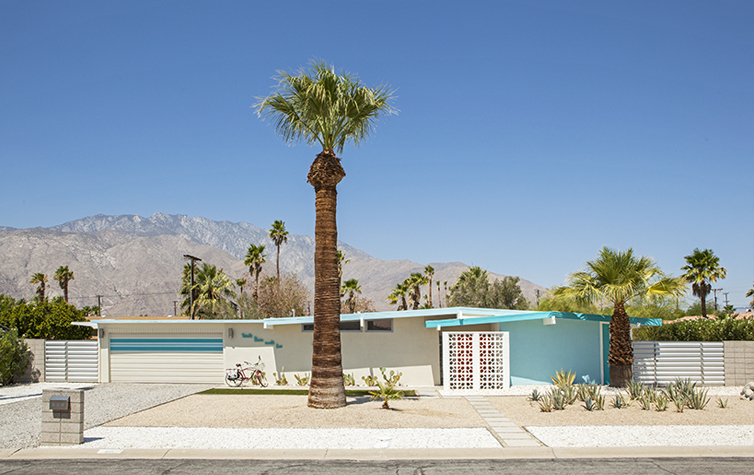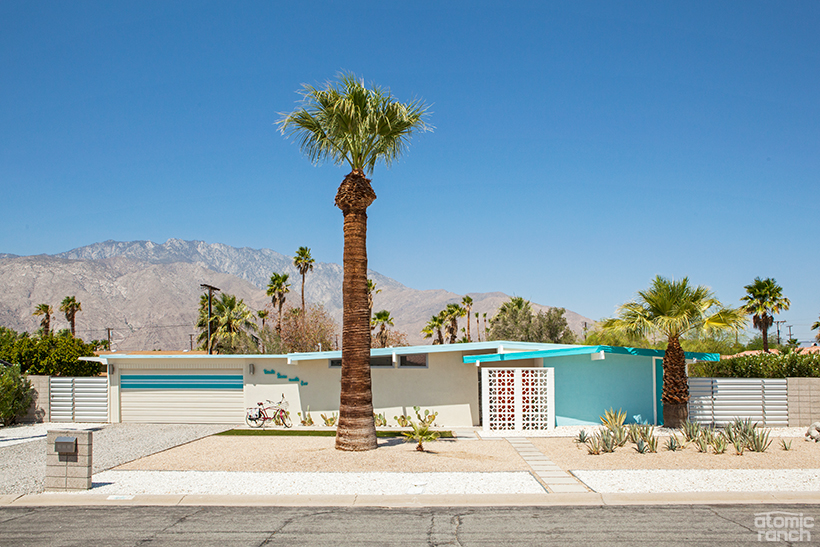
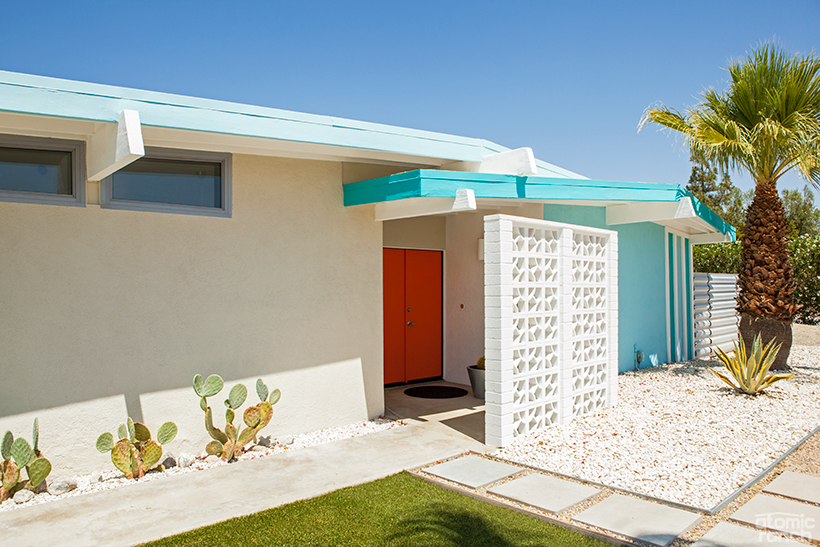
Having previously owned a Jersey City row house filled with antiques and marked by a rich, deep color palette, homeowners Michael DeJong and Richard Haymes might not seem likely candidates for a cross-country move to a mid mod home. Nevertheless, in 2012, the couple did just that—settling into a classic Palm Springs abode. “When we conceived [of] the house, we wanted things to be mostly white and light because back East our house was from 1833,” says Richard, a retired art director and former executive director of the New York City Gay and Lesbian Anti-Violence Project. Their former home was “very dark, so we were ready for a 180-degree change.”
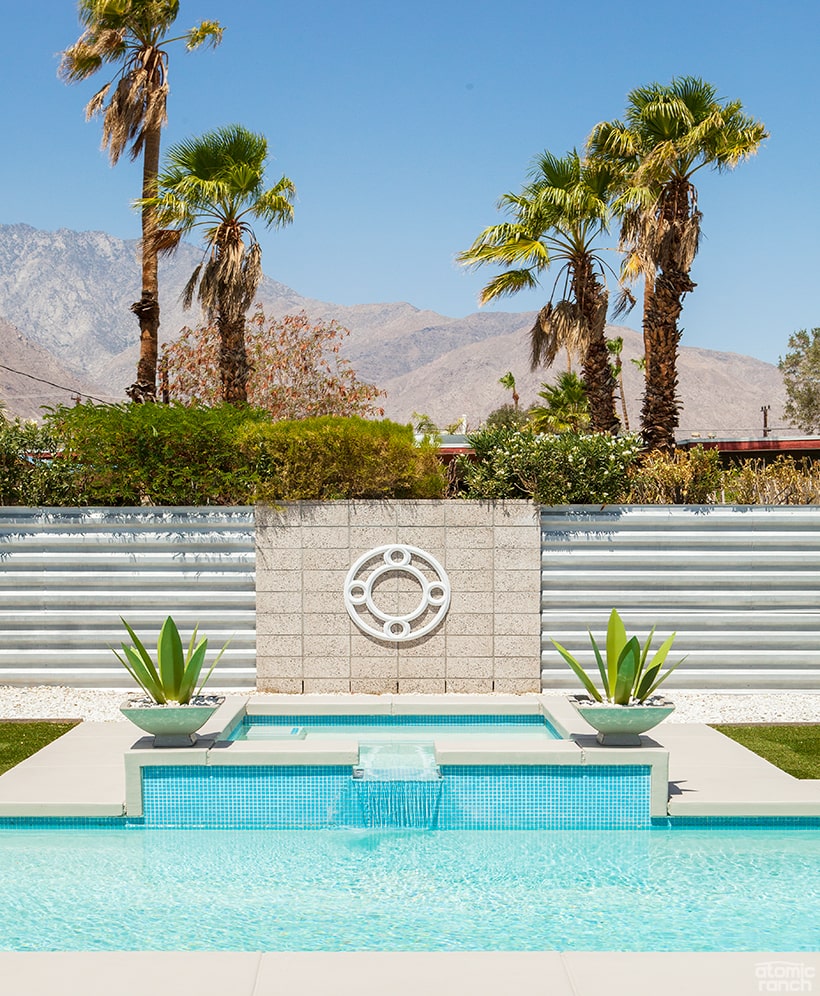
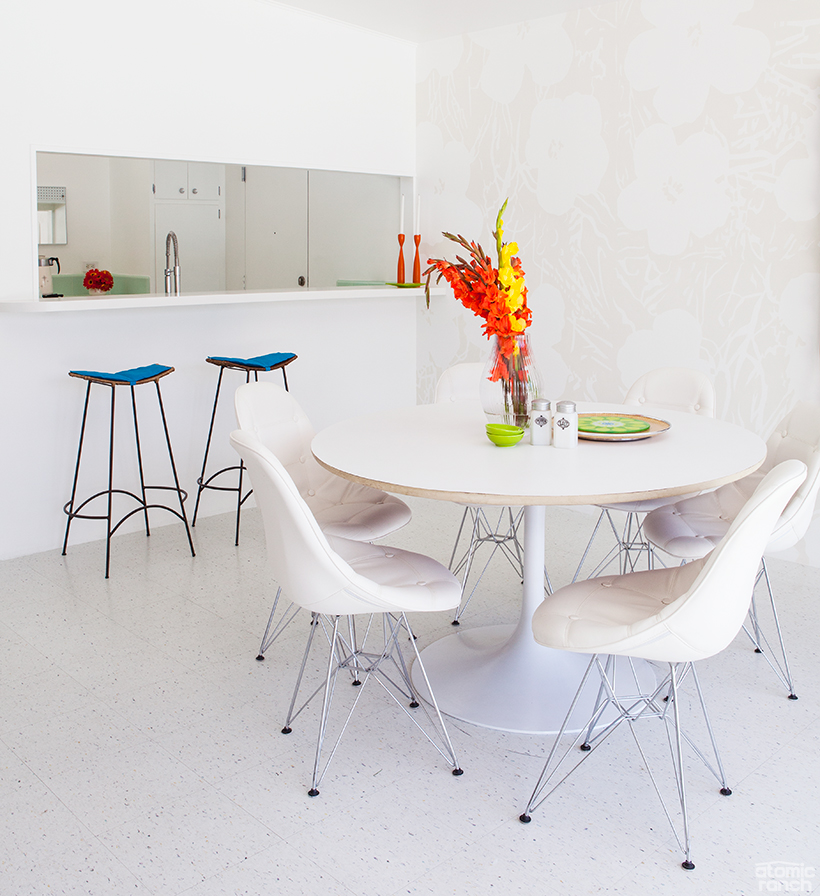
A Brighter Future
Michael and Richard soon found themselves with a West Coast home that needed brightening—and not just for aesthetic reasons. With a dismal brown paint job and what Michael, an artist, author and photo stylist, called “horrible drapes” and “really bad wallpaper,” Michael and Richard wanted to bring the house back to its glory days.
Their home is the work of Hugh Kaptur, a beloved local desert modernist architect who designed the 1959 house set amid the historic Ranch Club Estates neighborhood. Michael and Richard wanted Kaptur’s design to truly sing throughout the home. The couple went so far as to have Kaptur—who, at 85 years old, is still working—sign their closet during the filming for the documentary Quiet Elegance: The Architecture of Hugh M. Kaptur in 2012. The bright orange signature only marked the beginning of a process to restore the home to its original purity.
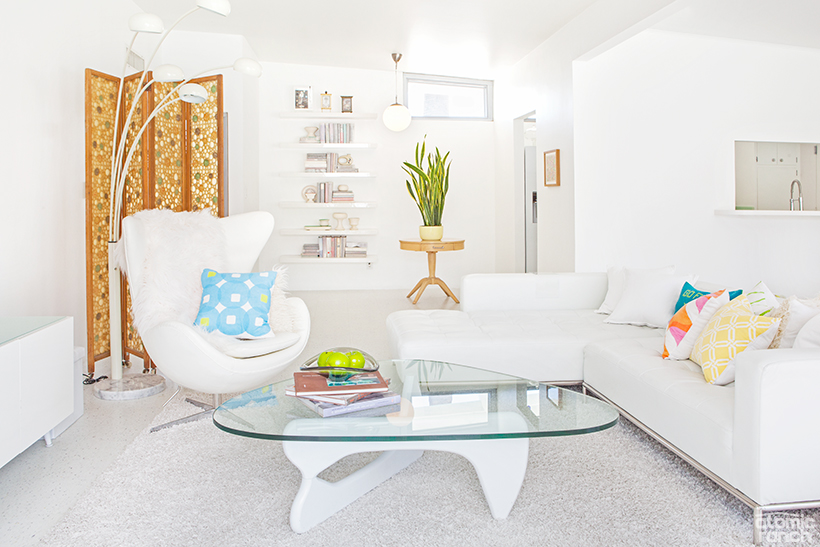
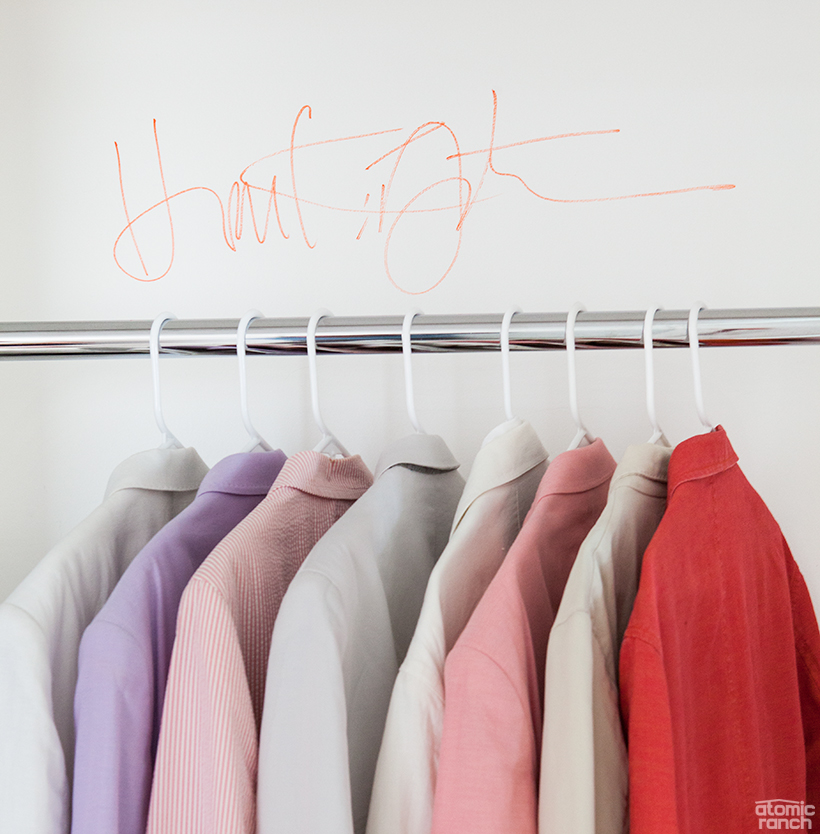
Restoration Rebel
To return to the midcentury essence that Kaptur intended, Michael, the handyman of the house, set out to restore—not to remodel. “The house was in remarkably original condition,” he says.
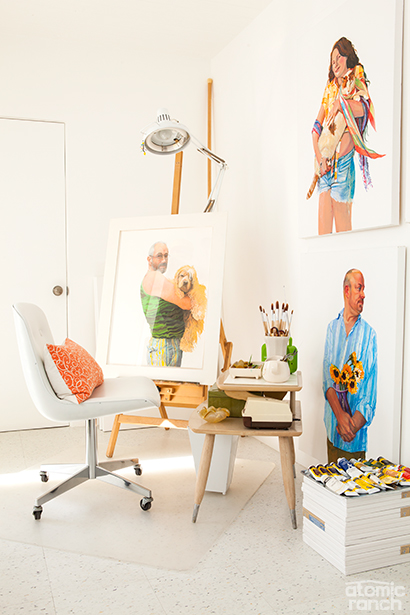
Pomona pink and yellow tile in the bathrooms as well as mint tiles and sliding pegboard cabinets in the kitchen made the house a midcentury dream. Michael removed any midcentury-defiant features that had been implemented by previous owners like non-period wallpaper, drapes and moldings. He then skim coated, plastered, sanded and primed the house. All of these restoration moves, in addition to bringing the flooring down to raw concrete and installing wall-to-wall “kindergarten” vinyl tiles throughout, aimed to create a clean slate.
Painting a majority of the home’s interior white also helped to this end—but it also fulfilled the couple’s non-midcentury interests. “We like houses that look like art galleries, and art galleries are white, so we painted ours white,” Michael says. The only wall with any “color” is in the dining area and is a cream-on-white interpretation of Andy Warhol’s very colorful 1964 Flowers series that Michael hand-painted. Michael and Richard’s attitude toward the walls also translates to the items they enclose.
Retro pieces from the ’50s and ’60s occupy a majority of the home, but Michael and Richard do not adhere to a Midcentury Modern rulebook. Just like the couple, their home is happy-go-lucky. If they like something, they go with it. “We decided we’d collect things that just make us happy, not necessarily because of their midcentury pedigree,” Richard says.
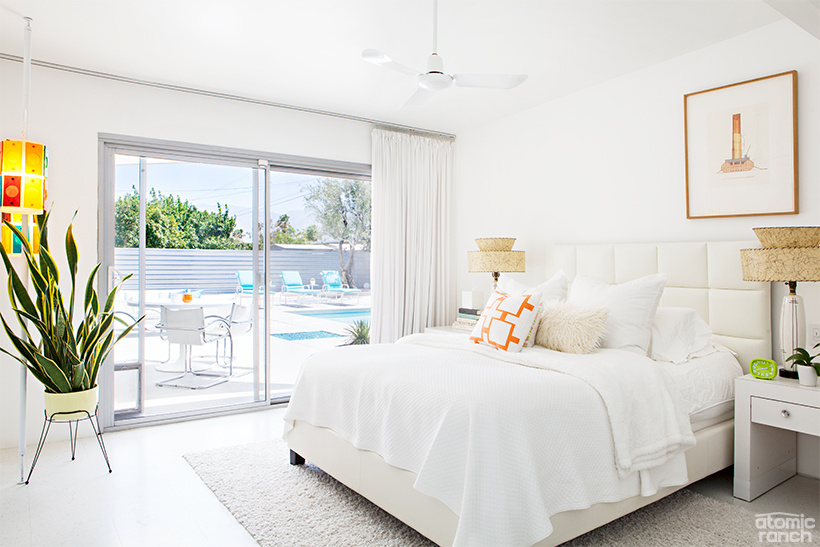
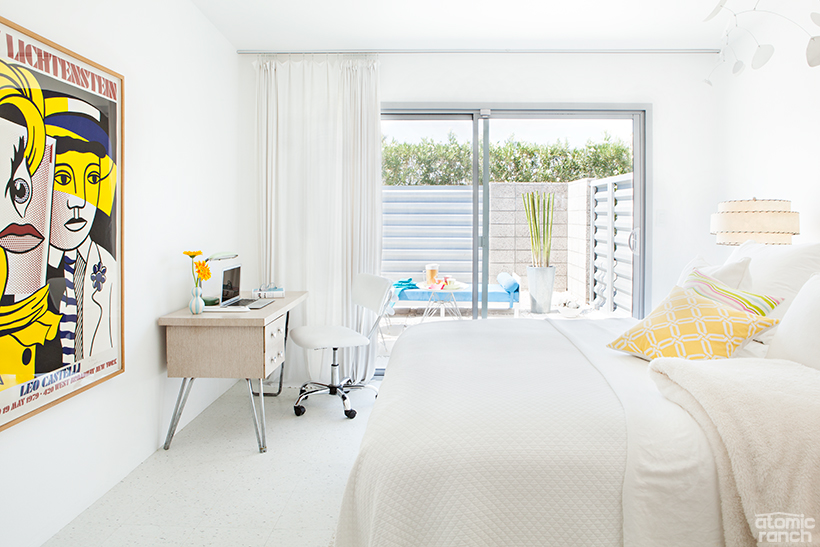
Their carefree approach in selecting the home’s furnishings also carries into how they preserve them. Michael often freshens up their décor with a can of spray paint, a move many midcentury purists avoid. Michael acknowledges the mid mod community’s disapproval over his choice to paint—but his itch to craft and fix up is too strong not to satisfy. His passion for personalizing is reflected in the paint jobs on some of the home’s numerous pieces, from the perfectly white Noguchi coffee table to the palette-perfect pepper mill on the kitchen counter. “Michael thinks he can cure leprosy with spray paint,” Richard jokes.
Michael and Richard don’t limit color to the home’s interior. Outside, buttercream walls and cheery turquoise accents exude the same peppy mood. The couple’s genuine approach turned their home into the “girl next door” version of living spaces: A home whose vibrant Palm Springs orange door you would not be afraid to knock on. “We didn’t want the house to look valuable,” Michael says. “We wanted it to look approachable, and we wanted it to look fun.”
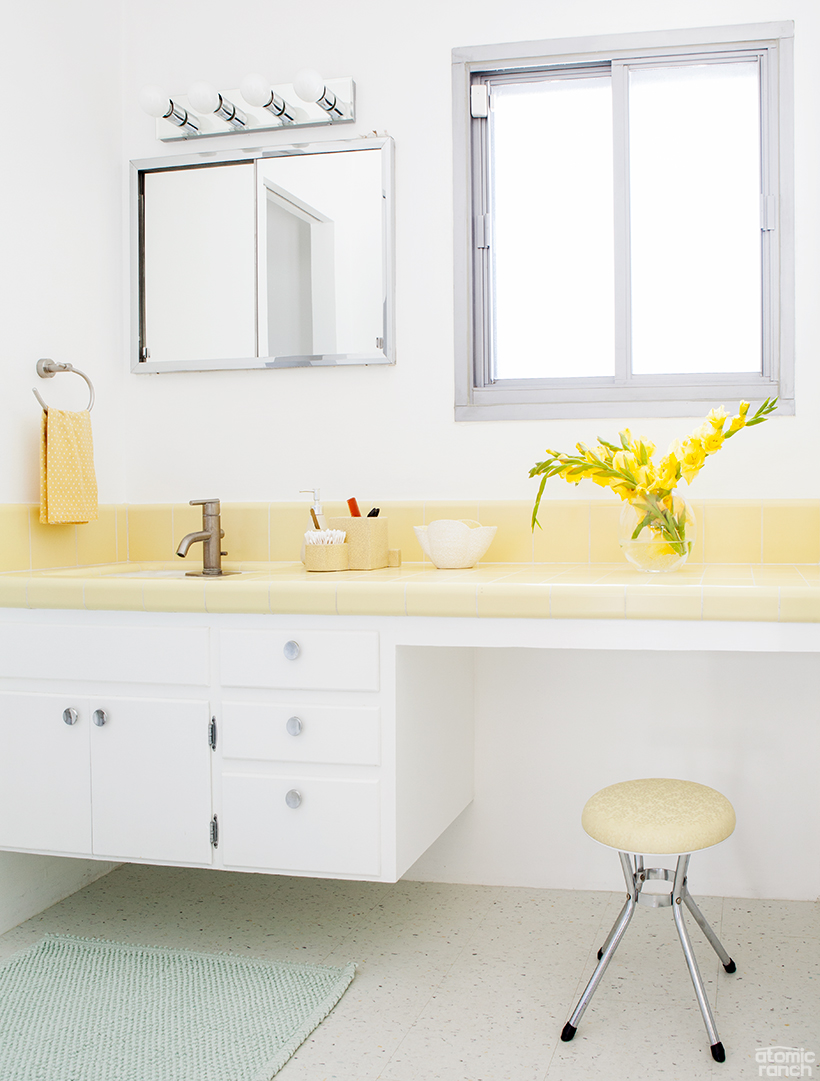
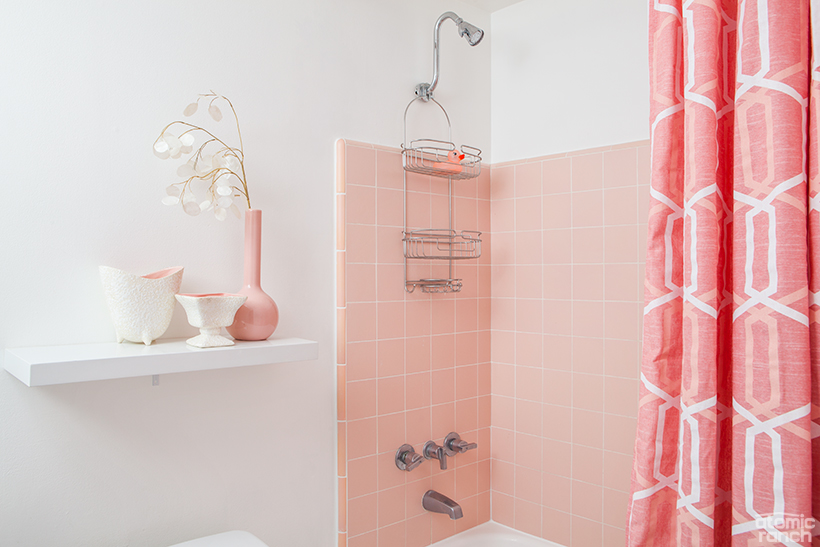
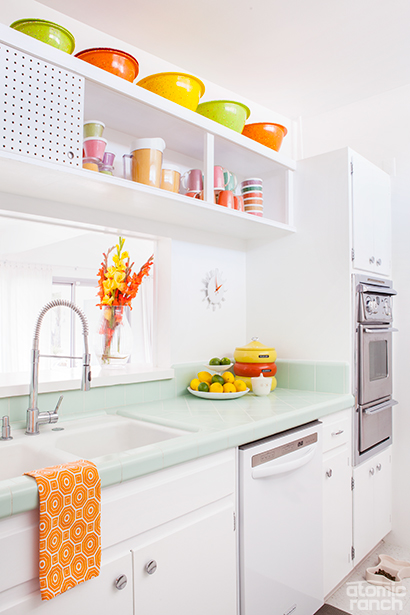
Permanent Vacation
Michael and Richard’s home now boasts an easygoing vibe, which is an intentional tribute to its history. In 1959, the basic house cost $12,500: A price tag just affordable enough for a buyer to snag so they could happily retreat to a second home in the getaway town. Low maintenance features like wood paneling, Formica, plastic and vinyl amplified the home’s vacation mood.
Having lovingly dubbed their home the “Holiday Inn,” the couple sought to consider their guests when designing the more practical elements of the home. Case in point: When you’re on vacation, you don’t worry about ruining furniture—Michael and Richard’s choice of easy to clean furnishings, including plastic furniture, eases this concern. Michael even handmade the floor-to-ceiling curtains out of swimsuit lining material so as to withstand the desert sun. “So if you have a wet bathing suit, sit on the couch,” Michael says.
Taking a lighthearted, joyful approach to their home’s design has worked well for Michael and Richard. Family and friends now travel the almost 3,000 miles from New York to vacation in the Palm Spring residence’s guest rooms.

